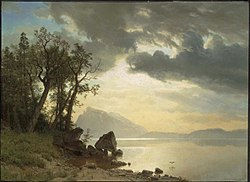Quilting: A Frontier Social Event
- Cheryl Anne Stapp

- Oct 20, 2021
- 2 min read

Quilt making in the nineteenth century was more than just the home-crafted production of usable warm bedding: it was more often than not a wonderful excuse for a social occasion.
From Colonial times, materials especially made for quilting had been available commercially. Nonetheless—in a rough frontier environment such as California was in the 1840s—women made do with what was at hand, accumulating dozens of bits and scraps of good quality cloth left over from making ticking, aprons, curtains, dresses and shirts. The pieces chosen for the crafter’s intended design, dominant color, overall pattern and motif were hand-stitched into manageable squares, or blocks, constructed in simple geometric shapes and then joined together, according to the crafter’s design, to form the top of the quilt.
Once the top was complete, or even before, neighbors were invited to lend their helping hands around the quilting frame. This handmade equipment, made by the quilter’s husband or other male relative, was fashioned of sturdy lengths of wood with areas for the top, inside batting, and bottom layer to be stretched firmly and held in place to prevent puckering as the layers were sewn together. The lightweight frames could be easily moved from place to place, or rigged from ceilings while work was in progress, then raised overhead at night, out of the way. Alternatively, four or more chairs could be used to prop the frame up to a comfortable level for the seated quilters.
Certain women were more skilled quilters than others, of course. Sometimes the gatherings were confined to “experienced” female sewers, but this was unusual in an era when only horses or mule-driven wagons covered the miles between isolated homesteads. Most often, quilting parties on a sparsely settled frontier were enjoyed as a community social event.
A group of women might work all day at a neighborhood quilting party, perhaps taking turns around the frame while others helped cook dinner in the hostess’s kitchen for everyone. The women exchanged gossip, recipes, housekeeping hints and childcare experiences. Their husbands and fathers exchanged gossip, political views, advice on planting crops or caring for livestock…and enjoyed a few hours free from farming duties.
On Thursday January 29, 1846, Mrs. Sarah Montgomery held the first quilting bee in the Sacramento Valley, a day-long event at her cabin in the vicinity of a trading post on the American River known as Sutter’s Fort.
Sarah, who had come overland with her bridegroom Alan as members of the Stephens-Murphy-Townsend Party in 1844, invited every family who had settled within 20 miles. Her female guests (and their menfolk) would have included some of the people she had journeyed west with, those who had established a ranch some miles south of Sutter’s place; and the women and men from the overland immigration of 1845 who still remained in the area. Although most of Sutter’s employees at his trading post were unmarried men, they were so eager to attend a party that Sutter gave them all the day off so they could go, too.




Comments